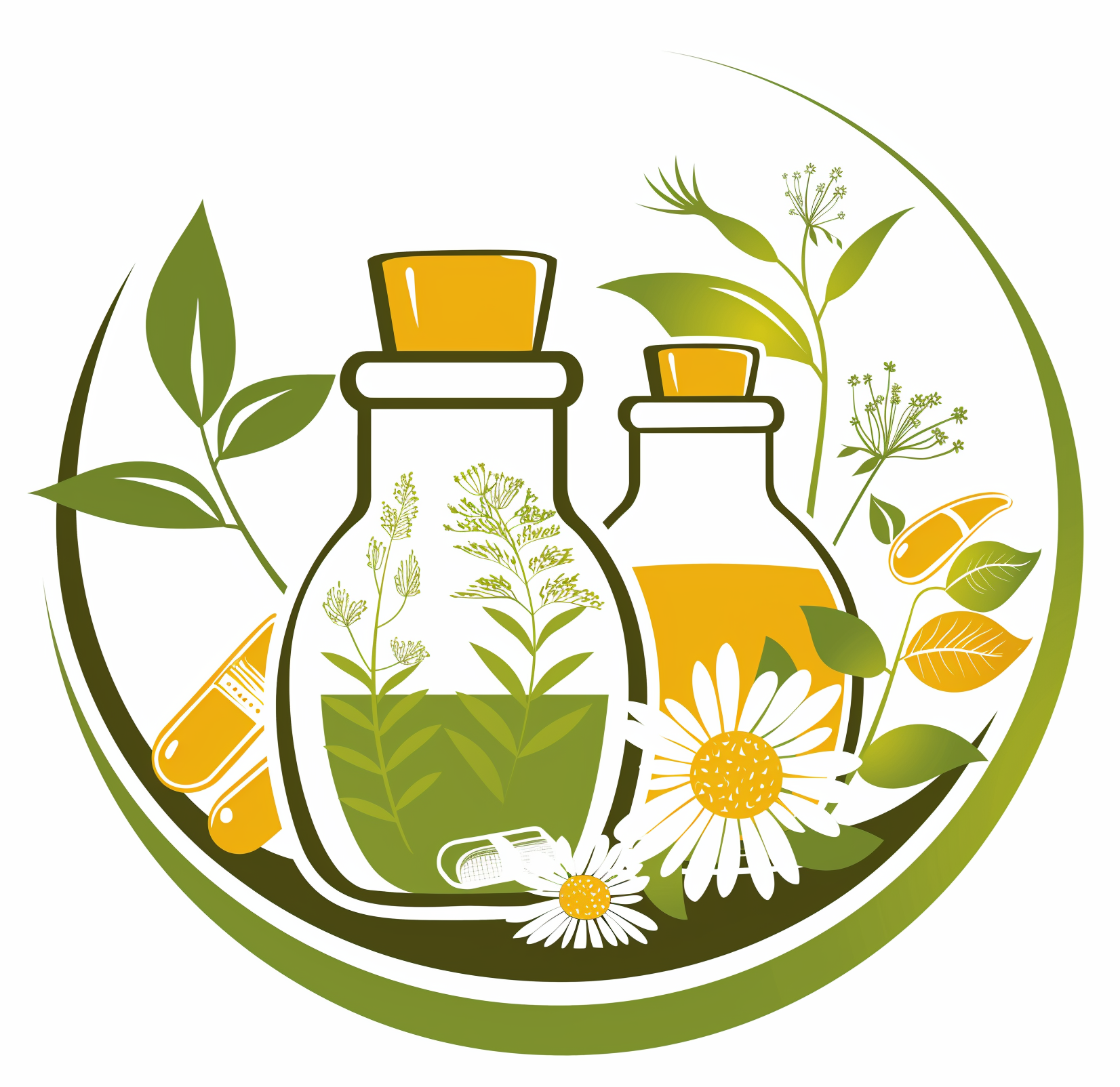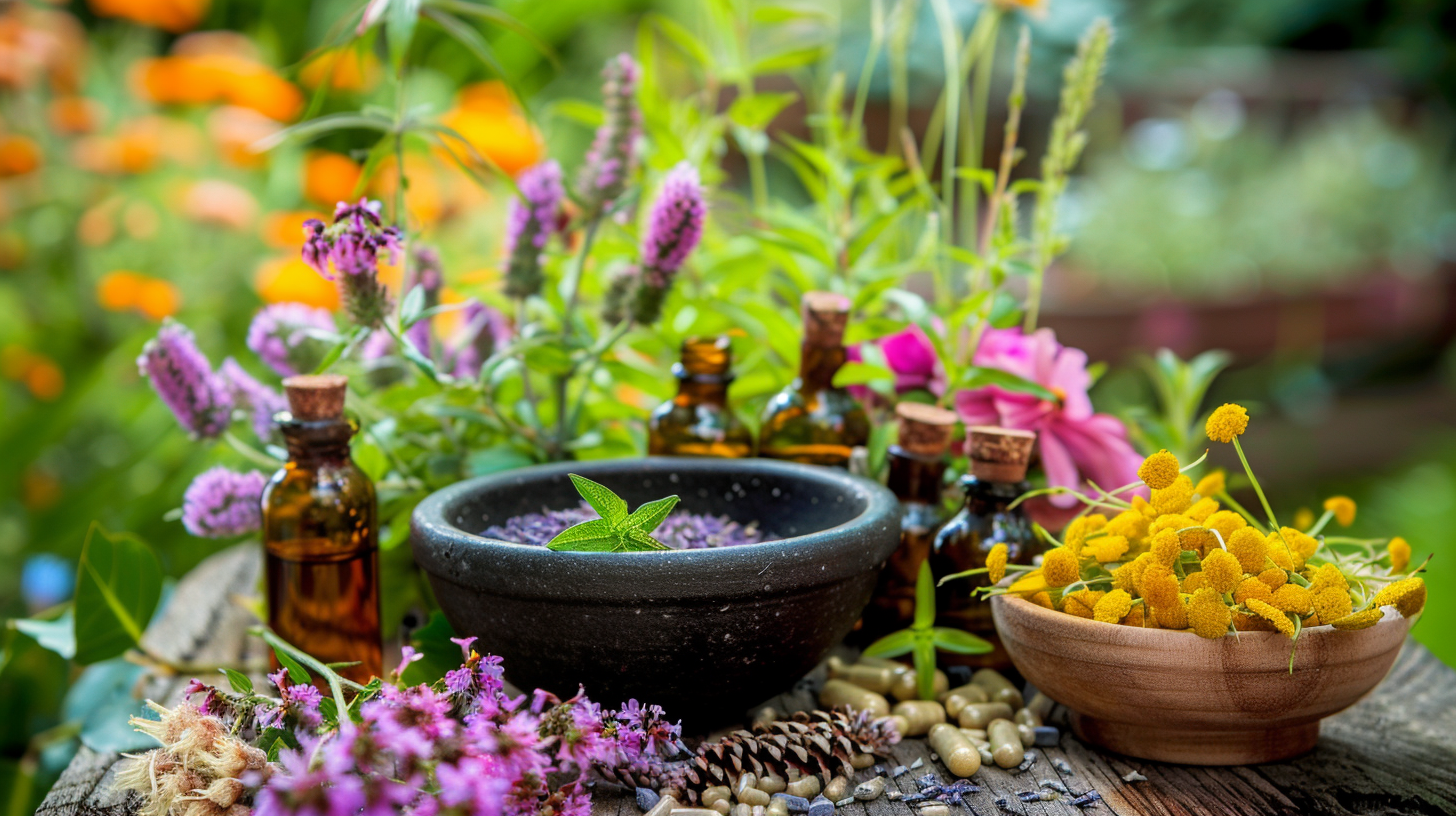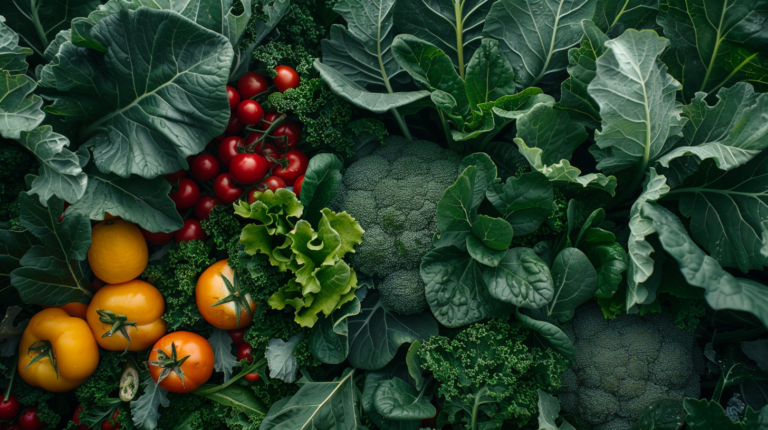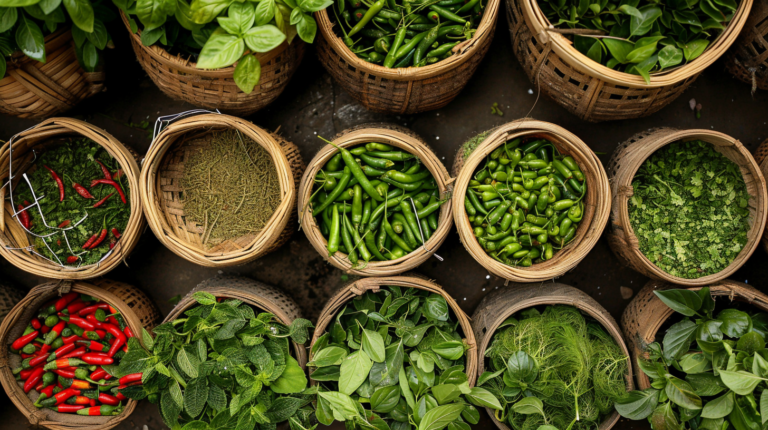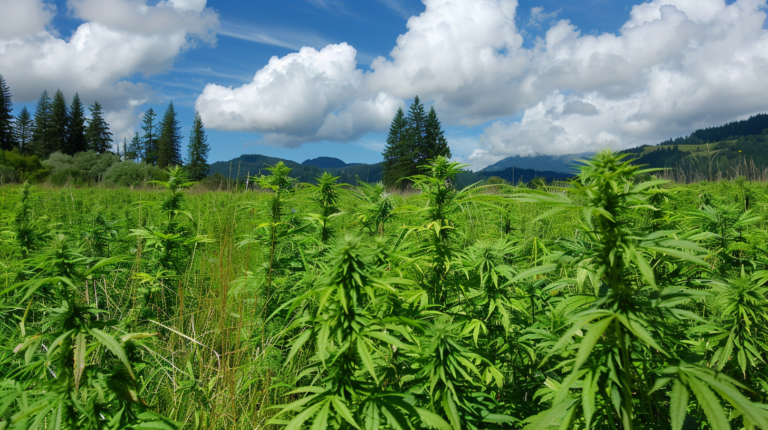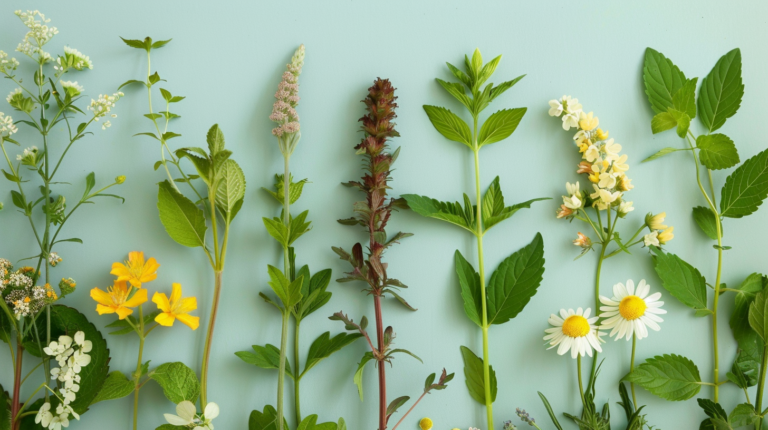Top Antiviral Medicinal Plants: Benefits, Uses, and Preparation
Imagine a world where viruses no longer hold you captive in an endless cycle of illness and recovery. The constant dread of the next bout of flu or a cold sore resurfacing can be overwhelming. It’s a problem that’s persistent and relentless, attacking your immune system and draining your energy. The omnipresence of viral infections like the flu, herpes, or even HIV leaves many of us searching desperately for potent, natural solutions.
The reality is, while modern medicine has made significant strides, it doesn’t always provide the holistic, side-effect-free solutions many of us crave. What if there was a way to combat these viruses using nature’s pharmacy? Enter antiviral medicinal plants. These incredible plants are nature’s antiviral warriors, boasting compounds that can inhibit virus replication, bolster your immune system, and provide relief from symptoms. From the humble elderberry to the mighty echinacea, these plants are packed with bioactive compounds that have been shown to possess antiviral activity against a variety of viruses. Imagine sipping on a cup of echinacea tea and knowing you’re fortifying your body’s defenses naturally and effectively.
What Are Antiviral Medicinal Plants?
Definition and Importance
Antiviral medicinal plants are natural herbs and plants renowned for their antiviral properties. These wonders of nature contain compounds that help combat viruses by inhibiting their growth or preventing them from entering host cells.
What’s fascinating is how ancient cultures, long before the advent of modern medicine, harnessed these medicinal plants to treat various viral infections. Think about it like nature’s way of saying, “Here, take this. I’ve got your back.”
How Antiviral Plants Work
These plants engage in a form of botanical wizardry. Let me explain: certain plants produce bioactive compounds. These compounds, such as flavonoids, alkaloids, and glycosides, actively interrupt the life cycle of viruses. Imagine them as tiny warriors fighting off invading armies. In scientific terms, these compounds exhibit remarkable antiviral activity by interfering with viral replication or boosting the immune system to fend off infections.
And let’s not forget about the notion of “everything old is new again.” Researchers are now validating the efficacy of these natural remedies that our ancestors swore by, often through studies found on platforms like Google Scholar and PubMed.
Historical and Cultural Context
The use of plants for medicinal purposes traces back thousands of years. Every culture—be it the grandmothers in India nurturing tulsi plants, or the wise elders in China brewing concoctions of licorice root—has its cherished herbal lore. In traditional African medicine, numerous herbs and roots are credited with potent healing properties. Over in North America, Native American tribes revered plants like echinacea and elderberry for their immune-boosting powers. It’s as though, across the globe, people have whispered to the plants, and the plants have whispered back.
Top Antiviral Medicinal Plants
Elderberry (Sambucus nigra)
Key Constituents and Medicinal Properties
Elderberries are a treasure trove of medicinal goodness. They are packed with vitamins C and A, alongside a range of bioflavonoids and phenolic compounds. These berries boast incredible immune-enhancing and antiviral properties, making them a formidable ally against viral infections like the flu, herpes, and shingles.
Preparation and Usage
Elderberries can be transformed into delicious syrups, wines, and teas. Have you ever tried elderberry fritters? Just dip the flowers in a light batter, fry them up, and serve with elderberry jam. Voila! You’ve got a remedy so delightful, it’s practically a dessert.
Scientific Studies and Evidence
Numerous studies, accessible via databases like PubMed and Google Scholar, have highlighted the antiviral capabilities of elderberries. For instance, research has shown that elderberry extracts can shorten the duration of flu symptoms, thanks to their ability to disrupt the viral envelope proteins.
Echinacea (Echinacea purpurea)
Key Constituents and Medicinal Properties
Echinacea is brimming with polysaccharides, caffeic acid, and echinacoside, all of which help bolster the immune system. This wonder herb enhances macrophage and T-cell activity, making your body’s first line of defense against foreign invaders as robust as a Spartan phalanx.
Preparation and Usage
To harness the magic of echinacea, make a tea or tincture at the first hint of a cold. Frequent, small dosages are the key to warding off illness. Keep it fresh and organic wherever possible to ensure you’re getting the most potent form of this herbal hero.
Scientific Studies and Evidence
Extensive research, particularly in Europe, has confirmed echinacea’s efficacy. Studies show that it can reduce the likelihood of catching a cold by about 58% and decrease the duration of a cold by one to four days. This data, usually found on Google Scholar or through PubMed abstracts, highlights why echinacea remains a staple in natural medicine practices worldwide.
Garlic (Allium sativum)
Key Constituents and Medicinal Properties
Garlic, the flavorful bulbous wonder, is not just a kitchen staple but also a medicinal marvel. It contains allicin, sulfur compounds, and selenium, all of which contribute to its antiviral prowess. Garlic has been shown to fend off various viral infections such as the common cold and influenza.
Preparation and Usage
You can take garlic raw, cooked, or in supplement form. For the bold and brave, consuming raw garlic cloves might be the most potent way to tap into its benefits. And if raw garlic seems too intense, consider adding it to soups, stews, or even making a garlic-infused honey.
Scientific Studies and Evidence
Scientific studies, including those accessible through Google Scholar crossref, have shown garlic’s effectiveness in preventing and treating common colds. A study published in the journal “Advances in Therapy” showed that garlic supplementation reduced the frequency of colds and flu by disabling the ability of viruses to invade cells.
Methods of Using Antiviral Medicinal Plants
Infusions and Teas
Preparation Techniques
Preparing infusions and teas is one of the simplest yet most effective ways to utilize antiviral medicinal plants. The process generally involves steeping the plant material—be it leaves, flowers, or roots—in hot water to extract the beneficial compounds.
Recommended Dosages
Dosages can vary, but a general rule of thumb is to use one teaspoon of dried herbs per cup of hot water. For fresh herbs, you might want to double the quantity. Sip slowly and regularly to help stave off viral infections.
Tinctures and Extracts
Preparation Techniques
Tinctures are concentrated extracts made by soaking herbs in alcohol or vinegar. This method is particularly effective for extracting and preserving the medicinal properties of antiviral plants. You can easily make these at home with a jar, your herb of choice, and some vodka or apple cider vinegar.
Recommended Dosages
Typically, a dosage of 1-2 ml of tincture, taken two to three times daily, is sufficient. Always consult a healthcare provider for personalized advice.
Essential Oils
Preparation Techniques
Essential oils are potent distillations that capture the essence of the plant. Methods of preparation usually involve steam distillation, and it’s best to use a quality distiller if you’re DIY-inclined.
Safety and Applications
While effective, essential oils must be used with caution. Dilute properly before use and never ingest essential oils unless advised by a healthcare provider. They can be added to diffusers, used in steam inhalation, or applied topically with a carrier oil.
Licorice Root (Glycyrrhiza glabra)
Key Constituents and Medicinal Properties
Licorice root is a sweet gem with a powerful punch against viruses. It contains glycyrrhizic acid, flavonoids, and saponins, all of which have shown to exhibit significant antiviral activities. This herb is particularly effective against hepatitis virus and herpes simplex virus. Think of it as a sweet guardian that also has anti-inflammatory and immune-boosting capacities, making it a versatile ally in the fight against viral infections.
Preparation and Usage
You can use licorice root to make teas, decoctions, and licorice candies. Try a simple licorice root tea: simmer a tablespoon of dried root in two cups of water for about 15 minutes. This soothing tea can be sweetened with honey and sipped to relieve a sore throat or boost your immunity.
Scientific Studies and Evidence
Research available through Google Scholar and PubMed has highlighted the multifaceted benefits of licorice root. Studies show it inhibits the replication of several types of viruses, including the hepatitis C and herpes simplex viruses. Scientists attribute these antiviral activities to the presence of bioactive compounds like glycyrrhizic acid.
Oregano (Origanum vulgare)
Key Constituents and Medicinal Properties
Oregano, a common kitchen herb, is packed with thymol and carvacrol—two compounds that give it a potent antiviral profile. This herb disrupts the membrane integrity of various viruses, making it harder for them to infect host cells. Besides its culinary uses, oregano is known in folk medicine for its broad-spectrum antiviral and antibacterial properties.
Preparation and Usage
Oregano can be used both fresh and dried. To make a potent oregano infusion, steep 1-2 teaspoons of dried oregano leaves in a cup of boiling water for 10 minutes. This herbal tea can support your immune system and help fend off colds and flu. Oregano oil, another popular preparation method, can be diluted and used for topical applications or taken in capsule form.
Scientific Studies and Evidence
Scholarly articles on Google Scholar crossref and PubMed abstract databases reveal that oregano’s active constituents disrupt the lipid envelope of viruses, demonstrating significant antiviral activity. The essential oils from the plant have been shown to inhibit the growth of respiratory syncytial virus and influenza virus, confirming oregano’s efficacy as a natural antiviral aid.
Methods of Using Antiviral Medicinal Plants
Infusions and Teas
Infusions and teas are arguably the easiest methods to integrate these medicinal plants into your routine. Using hot water to extract the medicinal compounds, you can enjoy a therapeutic beverage that’s as comforting as it is beneficial. The process generally involves steeping the plant material in hot water for 10-15 minutes.
Recommended Dosages
For herbal infusions, a typical dosage is one teaspoon of dried herb per cup of boiling water. For fresh herbs, you might want to use about double the quantity. Sipping on these teas throughout the day can provide ongoing support to your immune system.
Tinctures and Extracts
Tinctures are alcohol-based extracts of medicinal herbs, great for when you need a more concentrated dose. They’re versatile and long-lasting. To create a tincture, you’d soak the herb in high-proof alcohol for weeks, strain it, and bottle the liquid.
Recommended Dosages
The general recommendation for tinctures is to take 20-30 drops in a small amount of water, two to three times a day. It’s essential to follow personalized advice from a healthcare provider, especially if you’re using multiple herbs.
Essential Oils
Essential oils are highly concentrated plant extracts obtained through steam distillation. They’re potent and require careful handling. For antiviral benefits, oils like oregano, thyme, and eucalyptus can be diluted and used in diffusers, applied topically, or even incorporated into cleaning solutions.
Safety and Applications
While essential oils offer compelling benefits, they must be used with caution. Always dilute essential oils in a carrier oil before applying them to your skin. Certain oils are not safe for ingestion unless prescribed by a knowledgeable healthcare provider. Popular applications include adding them to a diffuser to purify the air or incorporating them into steam inhalations to support respiratory health.
Safety and Precautions
Possible Side Effects
While generally safe, some medicinal plants can cause side effects such as digestive upset or allergic reactions. Always start with small doses to gauge your body’s response, especially when trying a new herb. Garlic, for instance, can cause heartburn in some individuals, and licorice root should be used cautiously by people with hypertension.
Interactions with Medications
Herbal remedies can interact with pharmaceutical medications, sometimes enhancing or diminishing their effects. For instance, garlic can potentiate the action of blood-thinning medications, and licorice root can interfere with antihypertensive drugs. Always consult a healthcare provider before combining herbs with prescribed medications.
Guidelines for Safe Use
- Always source your herbs from reputable suppliers.
- Start with small doses and monitor your body’s response.
- Consult your healthcare provider, especially if you’re pregnant, nursing, or taking medications.
- Use essential oils with caution, always diluting them properly and avoiding internal use unless specifically advised.
- Educate yourself through credible resources like PubMed, Google Scholar, and other scientific databases.
Additional Resources
Books and Guides
Several authoritative books offer extensive insights into medicinal plants. “Rosemary Gladstar’s Medicinal Herbs: A Beginner’s Guide” is a fantastic resource for anyone new to herbal medicine. For a more scientific approach, consider “Medical Herbalism” by David Hoffmann.
Online Resources
Websites like Google Scholar provide access to a plethora of scientific studies and articles that validate the efficacy of antiviral medicinal plants. PubMed is another indispensable resource for finding exhaustive research on the properties and uses of various herbs.
Scientific Journals and Studies
Journals such as “Phytotherapy Research” and “Journal of Ethnopharmacology” often publish peer-reviewed studies focusing on the antiviral activity and other health benefits of medicinal plants. Keeping an eye on these publications can help you stay updated with the latest research in herbal medicine.
